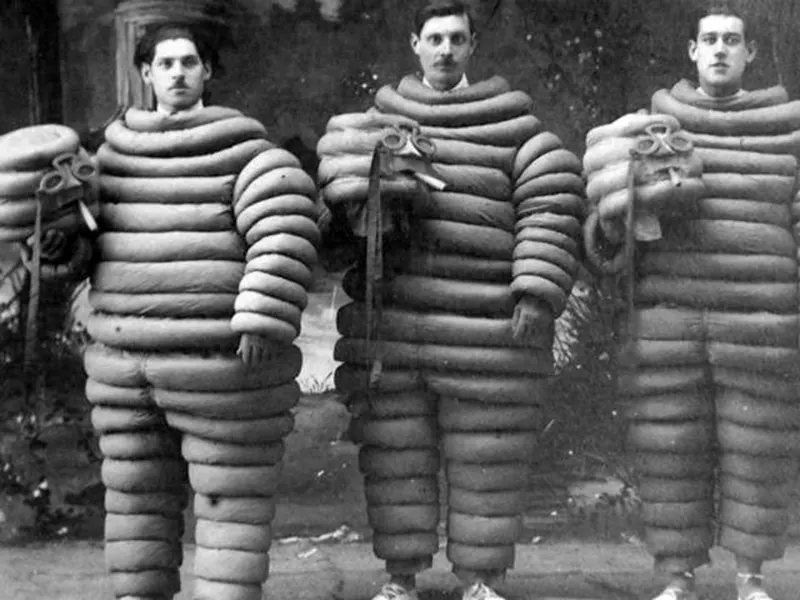
The world of marketing and advertising has witnessed numerous brand icons that have left an indelible mark on the collective consciousness.
Among these iconic figures, one stands out with its unique blend of charm and terror: the Michelin Man.
The story of the Michelin Man begins in 1894 when the Michelin brothers, André and Édouard, founded the Michelin Tire Company in France. Seeking a distinctive brand identity, they turned to the world of advertising.
While attending the Universal and Colonial Exposition in Lyon, the brothers noticed a stack of tires that suggested to Édouard the figure of a man without arms.
Four years later, André met French cartoonist Marius Rossillon, popularly known as O’Galop, who showed him a rejected image he had created for a Munich brewery—a large, regal figure holding a huge glass of beer and quoting Horace’s phrase Nunc est bibendum (“Now is the time for drinking”).
André immediately suggested replacing the man with a figure made from tires, and O’Galop adapted the earlier image into Michelin’s symbol. This unusual and striking persona would soon take on a life of its own.

Group of Michelin Men, Berlin, 1928.
The 1898 poster showed him offering the toast Nunc est bibendum to his scrawny Brand X competitors with a glass full of road hazards, with the title and tag C’est à dire: À votre santé. Le pneu Michelin boit l’obstacle (“Now is the time to drink!! Which is to say: ‘To your health, the Michelin tire drinks down the obstacle[s]!”).
The character’s glass is filled with nails and broken glass, implying that Michelin tires will easily take on road hazards.
As the decades unfolded, the Michelin Man underwent a metamorphosis, evolving from a mere graphic representation to a three-dimensional figure with a rich personality.
However, it was during his early years that the Michelin Man left an indelible impression on the collective consciousness.
These vintage photographs offer a mesmerizing glimpse into the origin and evolution of this iconic symbol.

This horse-drawn advertising carriage is from 1911. The two Michelin men, made of tires, look like they materialized out of a nightmare.
Rubber tires were originally gray-white, or light or translucent beige. In 1912, they became black when carbon was added to them as a preservative and strengthener.
The company changed Bibendum’s color to black as well, and featured him that way in several print ads.
They decided to abandon the change, citing printing and aesthetic issues (not racial concerns, as is commonly believed).
The image of the plump tire-man is sometimes used to describe an obese person, or someone wearing comically bulky clothing (e.g. “How can I wrap up warmly without looking like the Michelin Man?”).
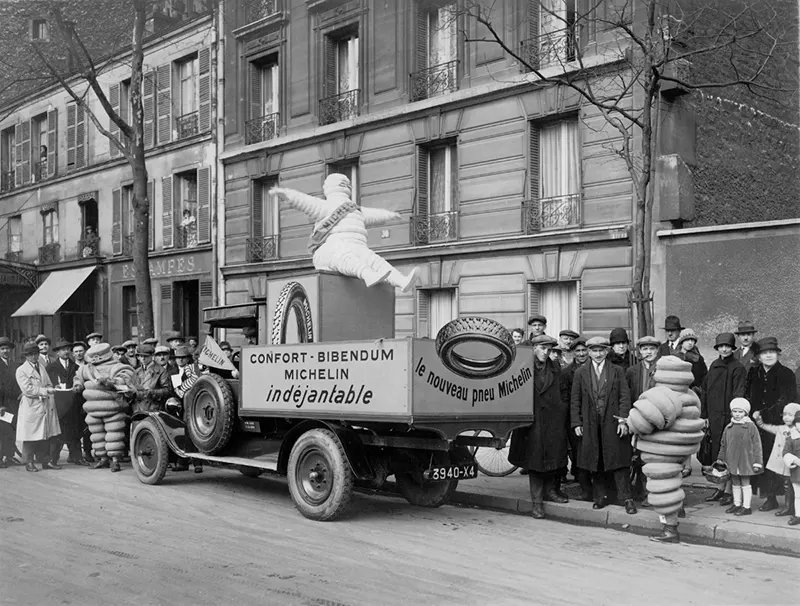
An advertising vehicle from 1926. Because tires were whitish-gray in the early 1900s, Bibendum was white.
Bibendum’s shape has changed over the years. O’Galop’s logo was based on bicycle tires, wore pince-nez glasses with lanyard, and smoked a cigar.
By the 1960s, Bibendum was shown running, often rolling a tire as well, and no longer smoked. In 1998, his 100th anniversary, a slimmed-down version of him (sans glasses) was adopted, reflecting the lower-profile, smaller tires of modern cars.
A computer-animated version of Bibendum has appeared in American television ads, with a pet puppy similar in appearance to him.
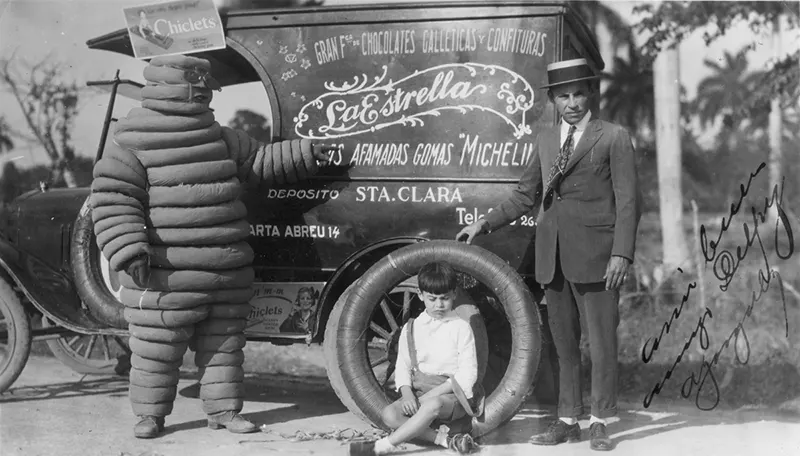
In this photograph, the Michelin Man stands next to an advertising vehicle used in Santa Clara in 1926.
Looking ahead, the Michelin Man continues to hold a significant place in the realm of brand icons.
As technology advances and new avenues for visual storytelling emerge, we can expect the Michelin Man to adapt and evolve while preserving its distinctive essence.
Whether it be through traditional mediums or digital platforms, this timeless character will continue to captivate and inspire audiences, transcending the boundaries of time and leaving an enduring mark on the cultural landscape.

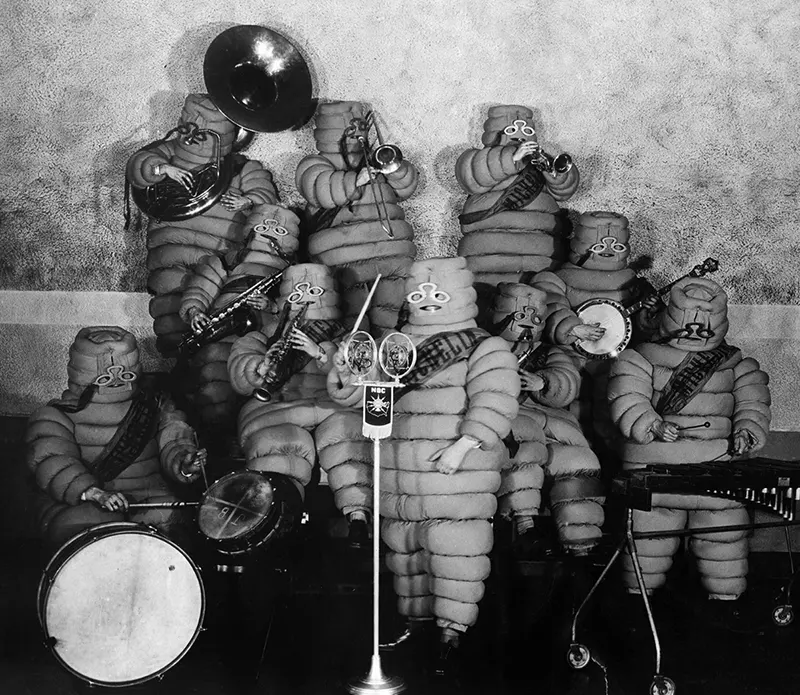
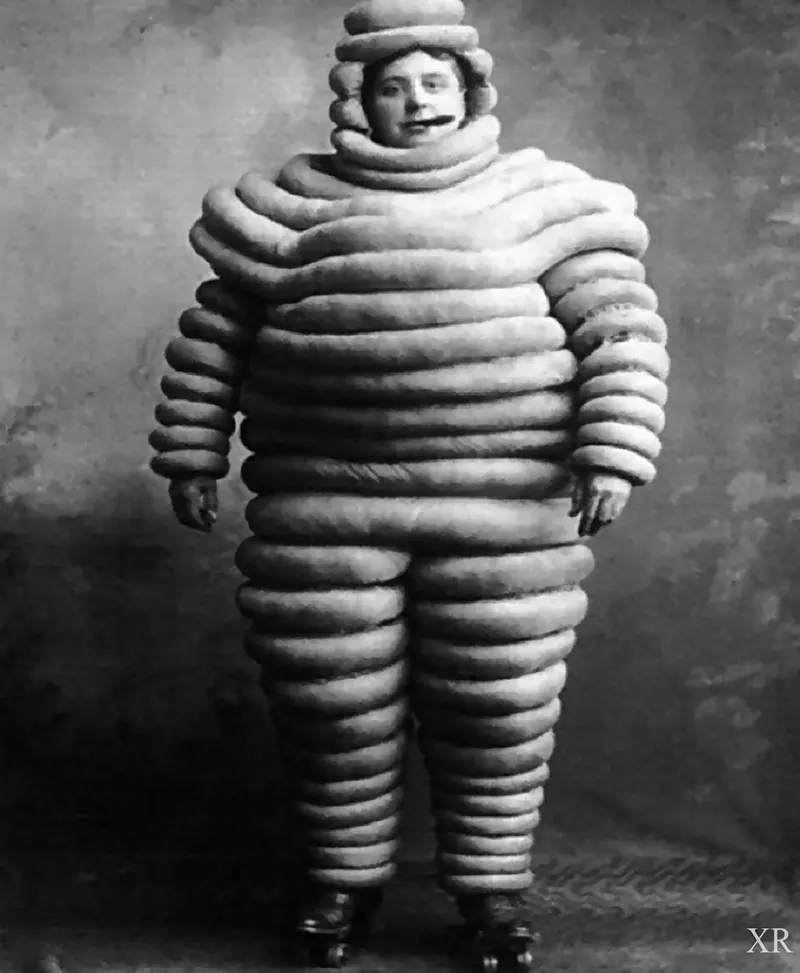



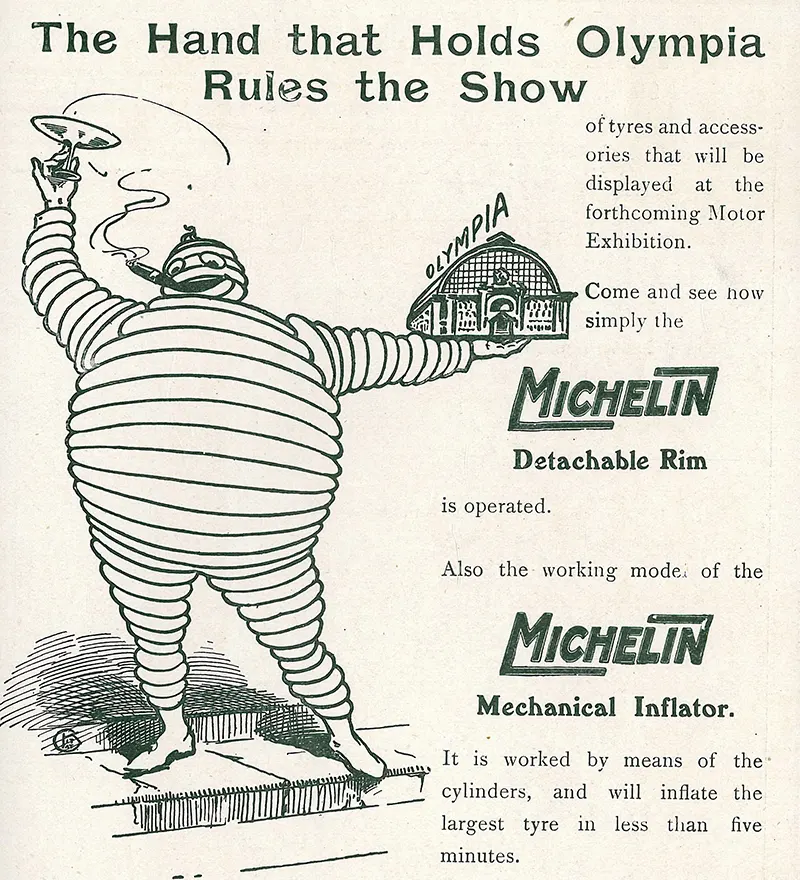
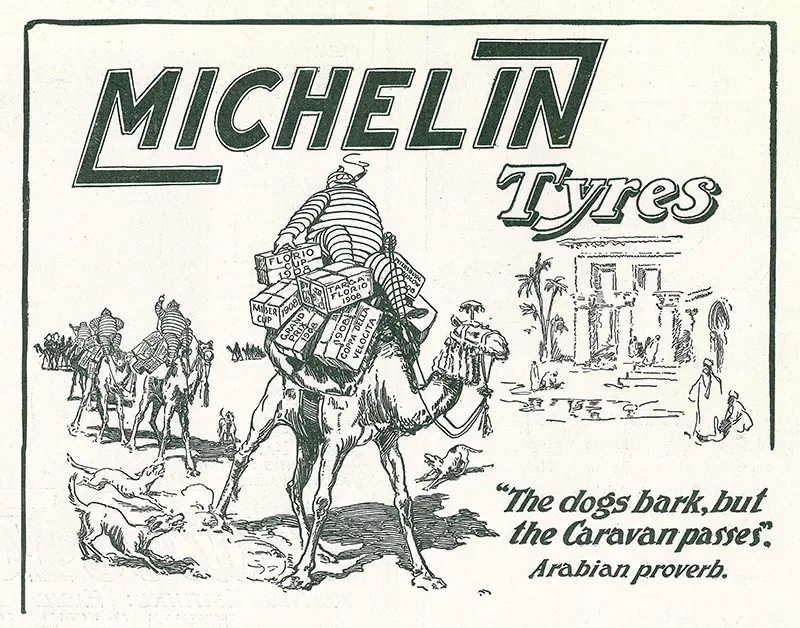

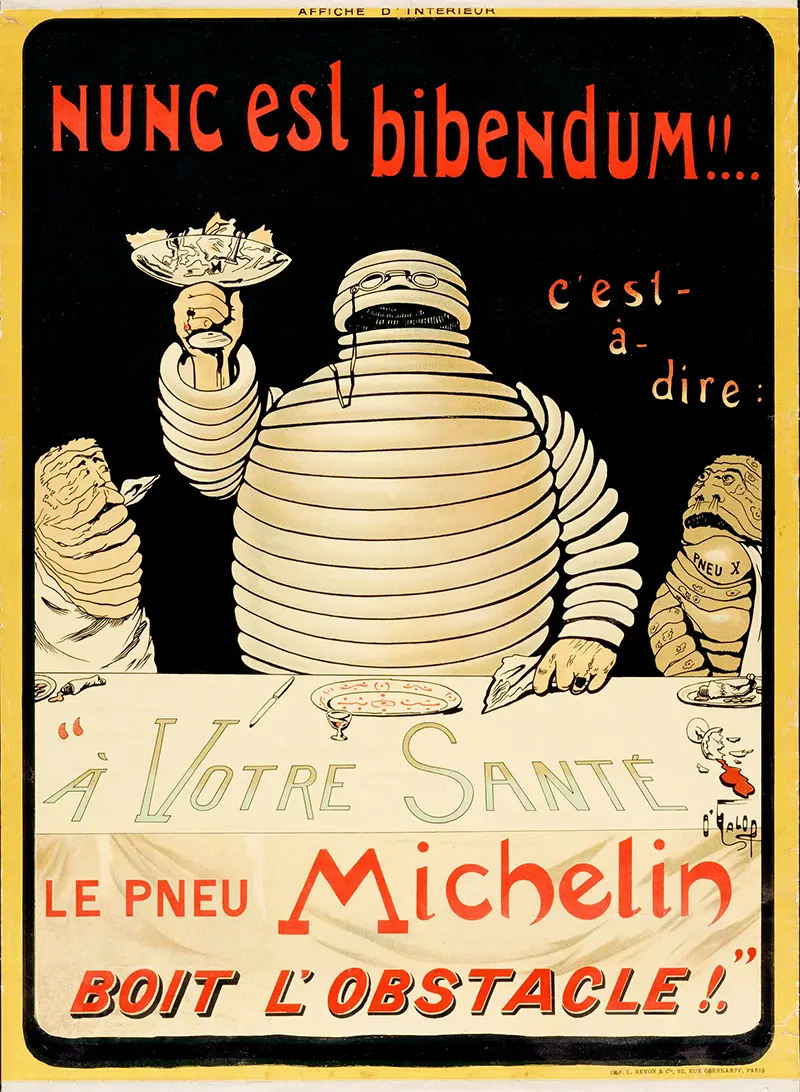
O’Galop’s first poster from April 1898 featuring the Bibendum character. The ‘toast’ translates as ‘Now it is time to drink…that is to say: your good health. The Michelin tyre drinks up obstacles!’ The idea was that Michelin tyres ‘drank’ up any obstructions in their way – Bibendum’s raised glass is full of broken debris.

Michelin Man depicted in 1912 with nails in his foot while smoking a cigar.
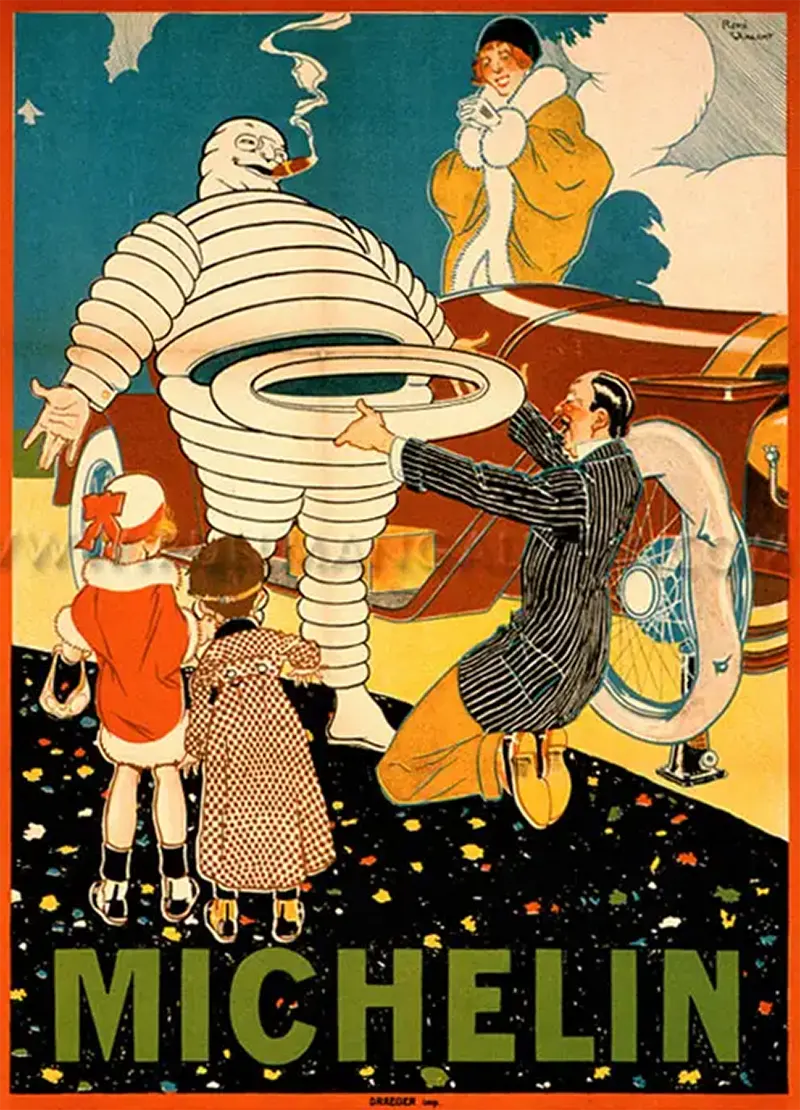
In this advertisement, Bibendum is giving a family a spare tire.


Michelin Man depiction from 1950.

A more rotund version of the Michelin man from the 1950s.

A poster from the 1970s show the transition to the jolly incarnation of Bibendum that is more recognized today. I’m Clinging in the Rain, 1975; Switch to Michelin, 1978.






